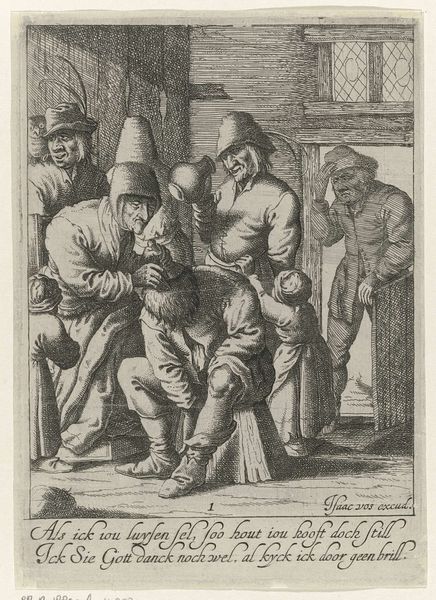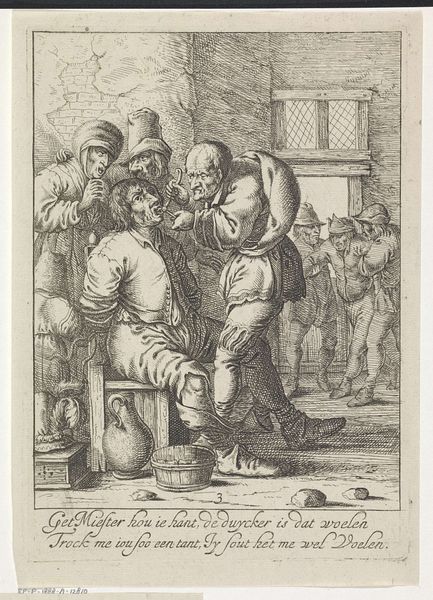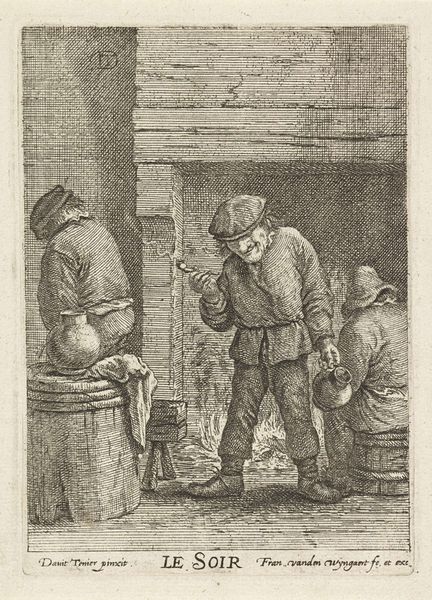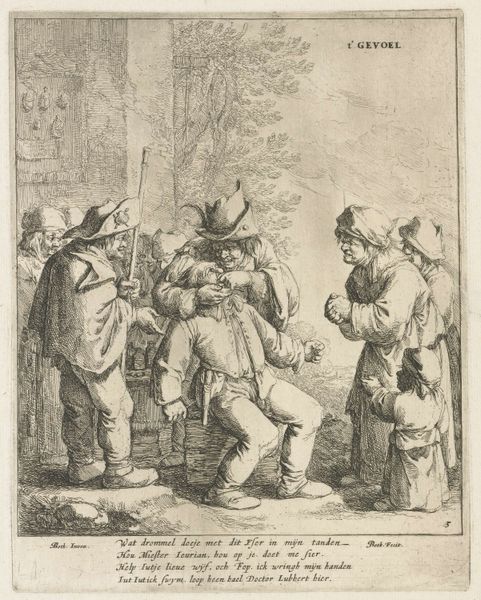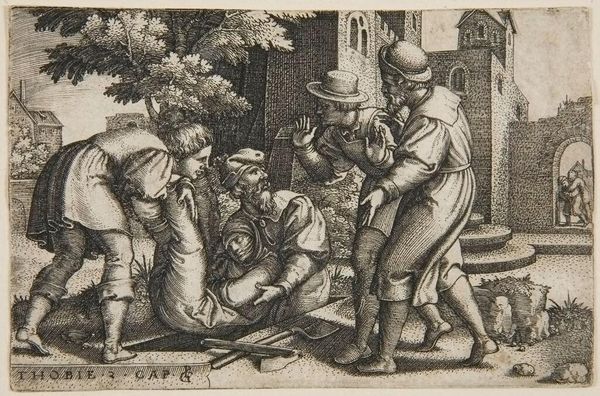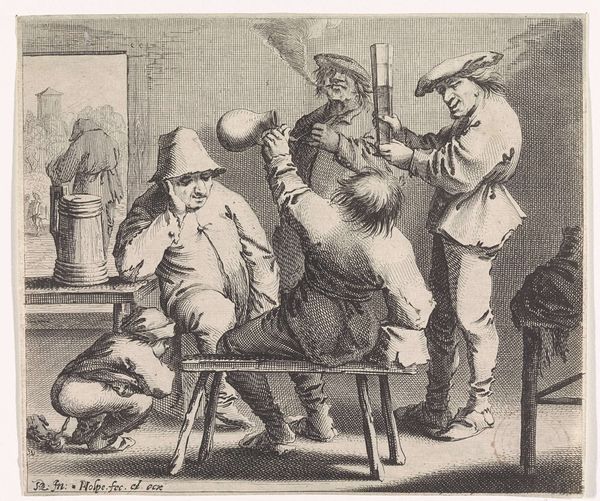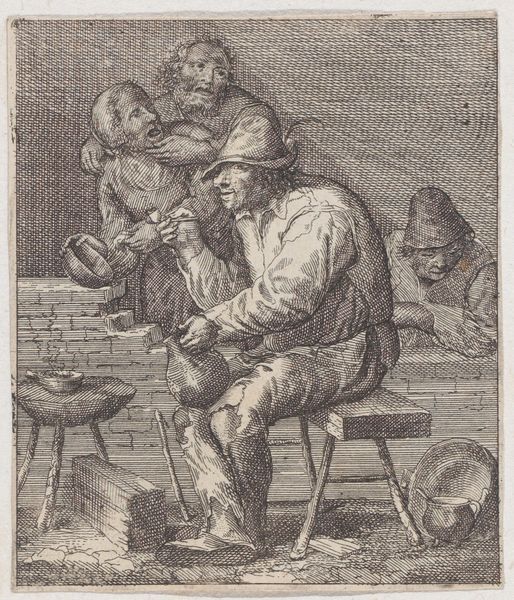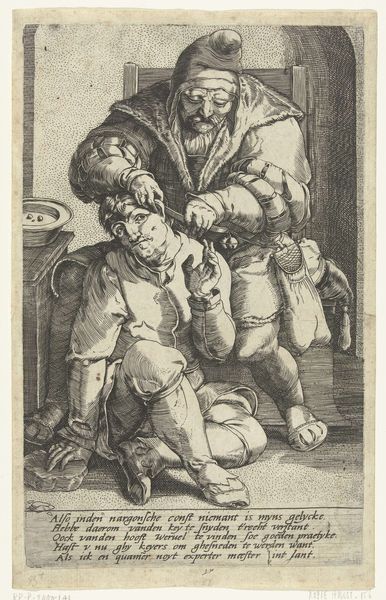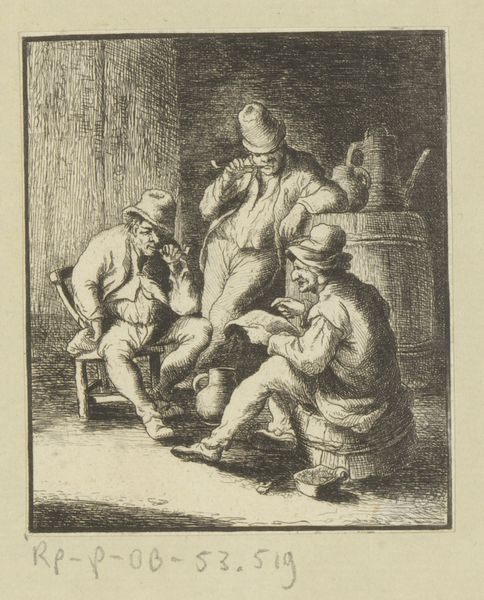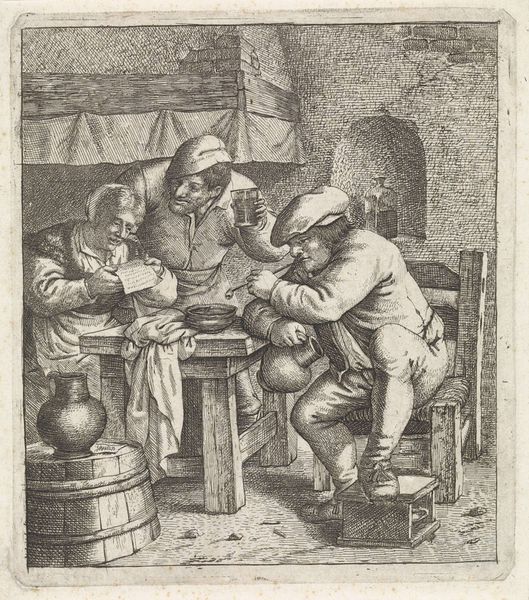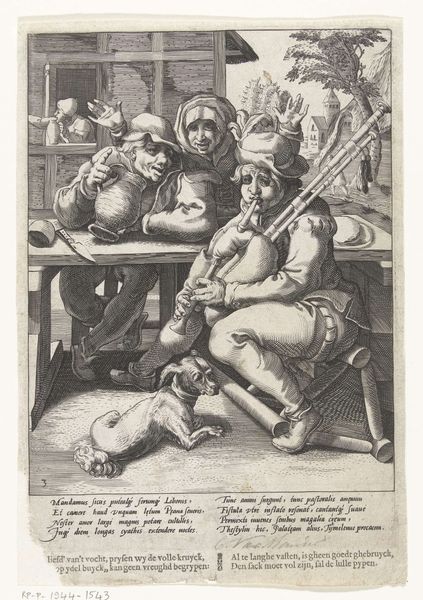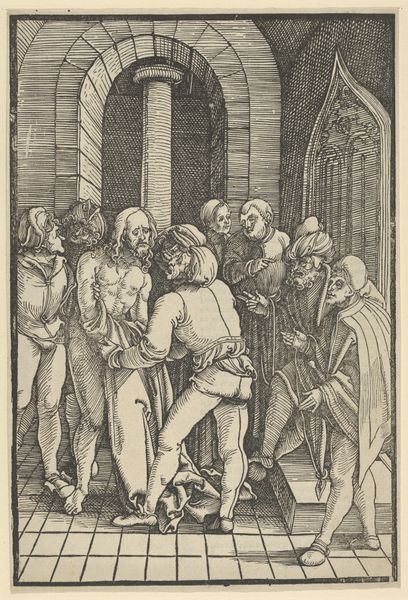
print, engraving
#
portrait
#
baroque
# print
#
caricature
#
old engraving style
#
caricature
#
portrait drawing
#
genre-painting
#
engraving
Dimensions: height 204 mm, width 144 mm
Copyright: Rijks Museum: Open Domain
Editor: This engraving, titled "Gezicht," created sometime between 1673 and 1709 by an anonymous artist, depicts a genre scene with caricatured figures. The level of detail achieved through the engraving process is really striking. What do you see in this piece, considering the methods employed to make it? Curator: The most interesting element here is the *means* of production, isn't it? Engraving itself involves a laborious, craft-based process, deeply intertwined with the socio-economic realities of printmaking at the time. The artist is using this technique, traditionally reserved for more 'refined' subjects, to depict what is, essentially, a scene of everyday life—perhaps even vulgarity. The contrast is potent. How do you think this tension plays out? Editor: I think that tension between technique and subject democratizes artmaking and consumption. It makes me think about the accessibility of prints versus paintings at the time. Were these images widely circulated? Curator: Precisely. Consider the materials involved: copper, ink, paper. These were relatively accessible, fostering a wider circulation of images and ideas beyond the elite circles of patronage. This challenges the very notion of 'high art' versus 'low art,' doesn’t it? We’re left considering how the *process* itself challenges those boundaries, opening discussions about labor, consumption, and representation. Editor: I see your point. I hadn't thought so deeply about the materials influencing its artistic value or intended audience before, and how printing changes its ability to be distributed. Curator: Absolutely! Looking at the tangible elements really enriches our experience. We need to reflect on not only the *what* but the *how* of art.
Comments
No comments
Be the first to comment and join the conversation on the ultimate creative platform.
